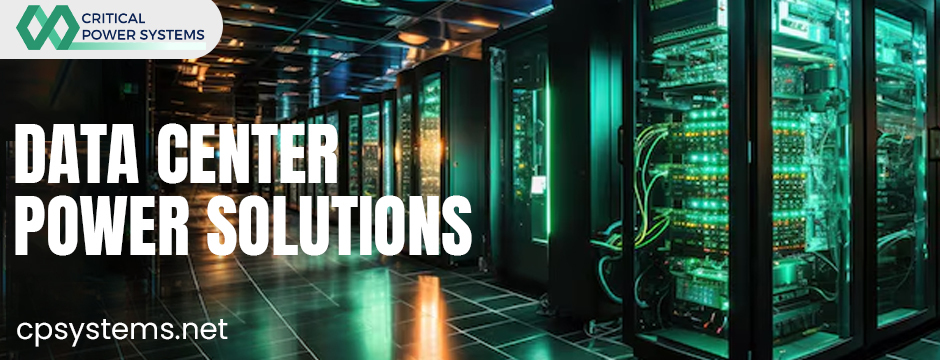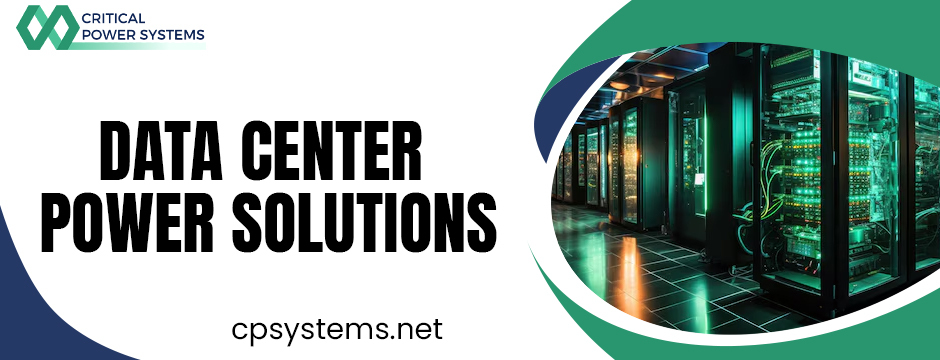There’s a certain kind of silence that strikes fear into the heart of any IT manager — the moment a data center goes dark. No blinking lights. No hum of machines. Just silence… and the sound of lost money.
Whether you’re managing a small in-house server room or running a multi-megawatt facility, the threat of downtime is real — and expensive. At Critical Power Systems, we’ve seen first-hand what an unexpected power issue can do. And trust us, it’s not pretty.
Let’s pull back the curtain and talk about what downtime actually costs, what causes it, and how a well-thought-out power strategy can prevent those problems before they even start.

The Hidden Price Tag of Downtime
Let’s start with a number: $504,000. That’s the average cost of a single data center power solutions outage, according to recent research by the Uptime Institute. But honestly, that number doesn’t always capture the full scope.
If you’re in finance or e-commerce, the real-time cost can run into tens of thousands of dollars per minute. Add to that the ripple effects—missed transactions, angry customers, reputational damage, and compliance risks—and you’ve got a situation that spirals quickly.
Here’s what businesses actually lose during downtime:
- Revenue: Every second a transaction can’t be processed is money gone.
- Productivity: Teams across departments hit a wall.
- Trust: Customers start to question reliability.
- Data Integrity: You risk corruption or loss.
- Penalties: Certain industries face steep fines for data availability issues.
Case Study: How One Business Lost $1.2M in Just 4 Hours
One of our clients — a well-known online retailer — experienced a brutal four-hour power failure during a seasonal sales event. Their infrastructure was modern. Their software stack was cutting-edge. But what failed? The UPS system. And not because it was old — but because it hadn’t been tested in months. The batteries had degraded, and no one knew.
That single outage cost them $1.2 million in revenue. But the worst part? They didn’t just lose money. They lost confidence. Customers turned to competitors, and the brand took a public beating. All of it could’ve been avoided with proactive power planning and regular health checks.
So… What Actually Causes Downtime?
Most people assume cyberattacks or software glitches are the main culprits. While those do happen, the most common cause is surprisingly simple: power failure.
Here’s a breakdown:
- UPS failure: Dead batteries, overloaded units, or skipped maintenance.
- Generator issues: Fuel problems, startup delays, or lack of testing.
- Electrical faults: Circuit breaker trips, grounding issues, or panel overloads.
- Human error: Missteps during switching or testing.
- Outdated systems: Legacy infrastructure that can’t handle current demands.
What makes this even more frustrating? Most of these failures are predictable and preventable.
How Power Planning Prevents Catastrophic Losses
This is where solid power planning comes in. At Critical Power Systems, we don’t just plug in equipment and hope for the best. We build layered, customized strategies that keep you running—even when the grid doesn’t.
Here’s how we help clients protect uptime and avoid disaster:
Redundant System Design
We design data center power solutions with N+1 or 2N redundancy, meaning if one component fails, another kicks in instantly. No disruption, no downtime.
UPS & Battery Health Checks
We run periodic battery tests, simulate load scenarios, and make sure your UPS isn’t just a box in the corner—it’s your first line of defense.
Real-Time Monitoring & Alerts
We implement monitoring systems that flag issues before they escalate. You get notified the moment something looks off.
Smart Load Management
A well-balanced load reduces stress on your gear. We help you organize circuits, reroute power if needed, and scale efficiently.
Troubleshooting & Testing
Our experts use thermal scans, waveform analysis, and fault testing to catch what the eye can’t see, i.e., for power system troubleshooting. If there’s a weak point in your power system, we’ll find it.
What You Save with the Right Power Strategy
Let’s be real. Nobody wants to talk about budget until it’s too late. But power planning isn’t an expense—it’s a revenue safeguard.
Here’s a snapshot:
| Category | Without Planning | With Power Strategy |
| Annual Downtime | 7–9 hours | < 1 hour |
| Financial Loss | $500K–$5M/year | <$100K/year |
| Customer Retention | Declines after each outage | Maintained or improved |
| Equipment Lifespan | Shortened by 30% | Extended with optimal load |
| Energy Costs | Inefficient, higher bills | Optimized and sustainable |
This isn’t theory—it’s what we see across industries, from healthcare to hosting providers to manufacturing facilities. Those who take power seriously stay in the game. Those who don’t? Well, you’ve read the headlines.

Why Critical Power Systems?
We’re not a “set-it-and-forget-it” kind of provider. We’re the ones you call when you want to sleep at night knowing your power is secure.
Our clients choose us because:
- We’re engineers and problem-solvers, not just salespeople.
- We bring decades of experience across critical infrastructure.
- Our solutions are built around your goals, not cookie-cutter templates.
- We provide 24/7 support, not just business hours help.
- We’ve helped clients reduce downtime by up to 90% — and that’s not fluff.
If you’re tired of gambling with uptime or feeling unsure about your current setup, it’s time to talk to someone who understands how high the stakes are.
Let’s Keep the Lights On — Always
You don’t need another reminder that downtime is expensive. What you need is a strategy to stop it from happening in the first place.
Let’s build a resilient, intelligent power infrastructure that doesn’t flinch under pressure. If you’re serious about protecting your data center power solutions and avoiding million-dollar mistakes, let’s talk.
Ready for a no-obligation power health check? Reach out to Critical Power Systems today.
Frequently Asked Questions
1. How often should a UPS system be tested?
Ideally, every quarter. Batteries should undergo load testing at least once a year. Regular checks can prevent most surprise failures.
2. What’s the difference between N+1 and 2N systems?
N+1 means one backup component for every key part. 2N is full duplication — a complete mirror of your power system. It offers higher reliability but comes at a higher cost.
3. Can I upgrade my current setup without starting over?
Absolutely. We specialize in modernizing existing systems with minimal disruption. Our power audits help identify where to start.
4. How do I know if my facility is at risk for power-related downtime?
If you haven’t tested your UPS, generator, or load balance in the last six months, you’re likely at risk. Let us perform a quick evaluation and give you clarity.
5. Do you provide support during emergencies?
Yes — our team is available 24/7 for emergency troubleshooting, on-site support, and remote diagnostics.

